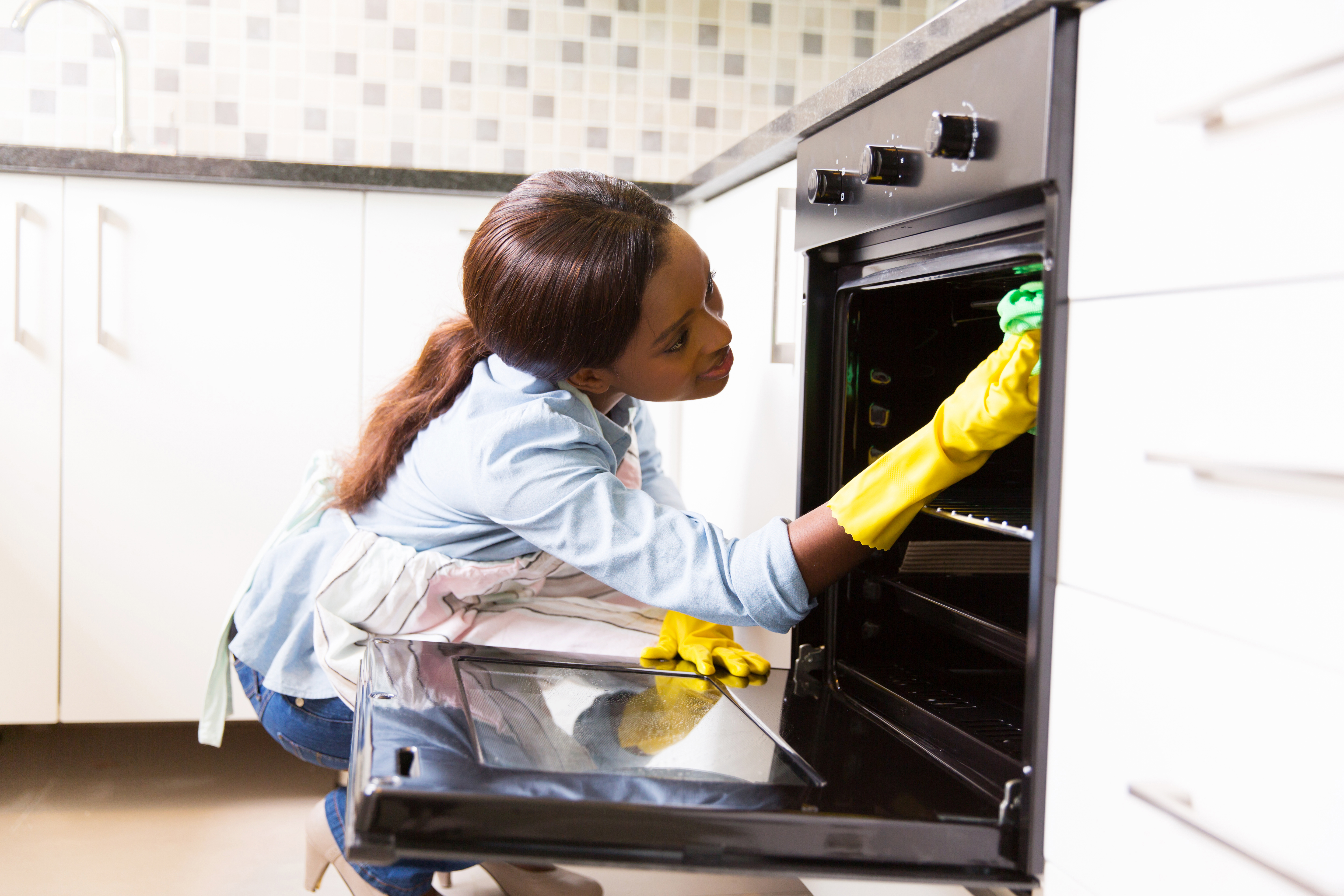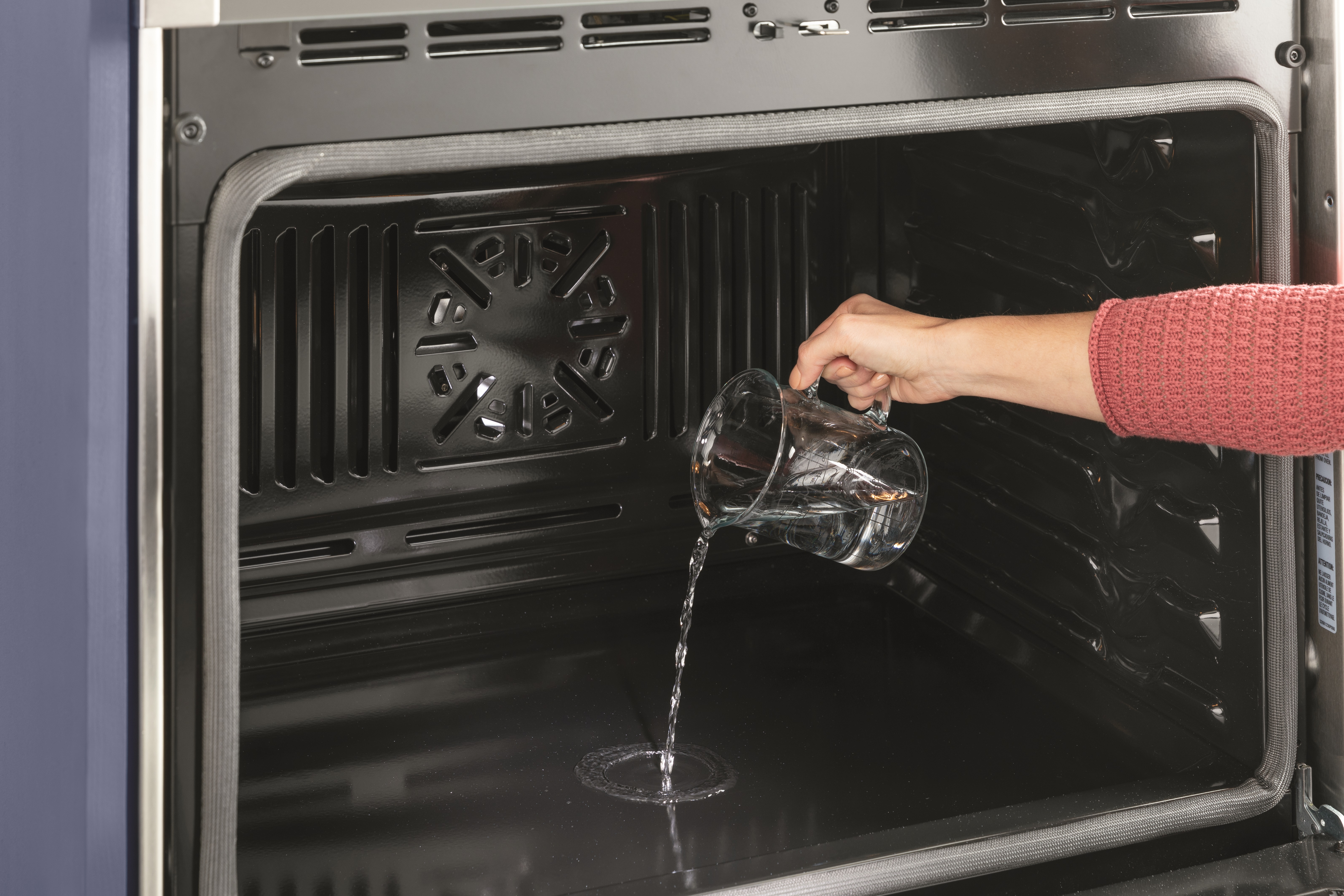In this Article:
Self-Cleaning vs. Steam-Cleaning
There’s the joy of cooking, and then there’s the frustration of cleaning up stubborn, caked-on messes that’s part of the process. For cooktops, maintenance can be as simple as wiping spills away, but when it comes to wall ovens and range ovens, it’s time to bring out the elbow grease. That is, until the rise of innovative ovens that feature cleaning cycles — specifically, self-cleaning and steam-cleaning. These two popular cleaning methods have revolutionized mealtime cleanup, but each has its own pros and cons. Follow along as we provide a closer look at what each function does and how.

Self-Cleaning Ovens
Did you know self-cleaning ovens are capable of reaching temperatures hotter than those used for cooking? When preparing meals, an oven typically reaches a max of 500 degrees, but ovens with a self-clean mode can reach 600+ degrees, essentially “cooking” residue until it becomes ash. Self-cleaning ovens also use a specialized enamel surface, so once burnt-on foods turn to burnt powder, they’re easily wiped away (we recommend a shop vac for no-fuss cleaning).
As you might’ve guessed, the use of extreme heat also comes at the cost of higher energy consumption, and since an oven’s self-cleaning process can take anywhere up to four hours, that means the oven will be out of commission for a while. During that time, it’s also important to practice safety since the outside of the oven or range can also become hot from radiant heat. Households with children or pets should make sure a wall oven or rang is properly safeguarded during the self-cleaning cycle to prevent any injuries.
Here’s a handy step-by-step guide from GE:
Pros:
✓ Effectively cleans every surface inside an oven
✓ Requires no chemicals or water
Cons:
✗ High energy consumption
✗ Extreme heat is required for the job
✗ Long cleaning times
✗ Potentially dangerous
✗ This method can sometimes produce strong smells
Steam-Cleaning Ovens

For those who prefer a cleaning method that uses less heat — rejoice! Steam-cleaning ovens let you use the power of water vapor to effectively clean an oven’s interior, but at much lower temperatures than a self-cleaning mode. All this method requires is a cup or so of water placed on the bottom of the oven and the cycle creates steam that penetrates deep into messes, gently lifting them off a low-maintenance enamel surface coating. (Note: Do not attempt this with an oven that is not steam-cleaning; it can ruin the heating element.) At the end of a short cleaning cycle — which is usually around one hour — the only step that remains is to wipe away any water that remains at the bottom of the oven.
Before using steam-cleaning mode on an oven, give this checklist a look:
- Never use oven cleaners with a steam-cleaning cycle (or self-cleaning, for that matter).
- To avoid spills from setting in, use the steam-clean mode immediately after the oven has been allowed to cool completely.
- Avoid opening the door during the steam-clean cycle.
- Thoroughly wipe away remaining moisture from all surfaces to prevent future messes from sticking.
- Use a soft brush or scrubber for more stubborn messes.
Steam-Cleaning Ovens vs. Steam Ovens
A common question buyers often ask is, “Can I also use steam to cook in a steam-cleaning oven?” It makes sense to assume that would be the case, but despite two very similar names, these two appliances work differently. While steam-cleaning ovens function as described above, a steam oven uses a water reservoir or connected water line to inject steam into a cooking process. By doing so, high-temperature water vapor works as a conductor to cook foods. While this doesn’t actively clean the inside of an oven, with constant use, it can help to keep residue from sticking to surfaces, which may also help with the overall cleanup.
Pros:
✓ Fast cleaning process
✓ Virtually odorless
✓ Lower energy consumption
✓ Effective cleaning results
Cons:
✗ Walls and back of oven not as effectively cleaned
✗ Door does not automatically lock like self-clean mode
Self-Cleaning vs. Steam-Cleaning: Which is Better?
Cleanup is never a job anyone looks forward to, but with these two powerful methods for cleaning an oven, home cooks will be able to delight in a less hands-on approach.
All in all, self-cleaning ovens are best for households that frequently use the oven to prepare meals and seek an automated cleaning process that tackles the entire interior of an oven.
On the other hand, steam-cleaning ovens are still fantastic options, especially in kitchens that utilize the oven less than a cooktop or rangetop. The gentle cleaning is also safer to use around children and pets, and the quicker cleaning times are less intrusive on daily routines.
